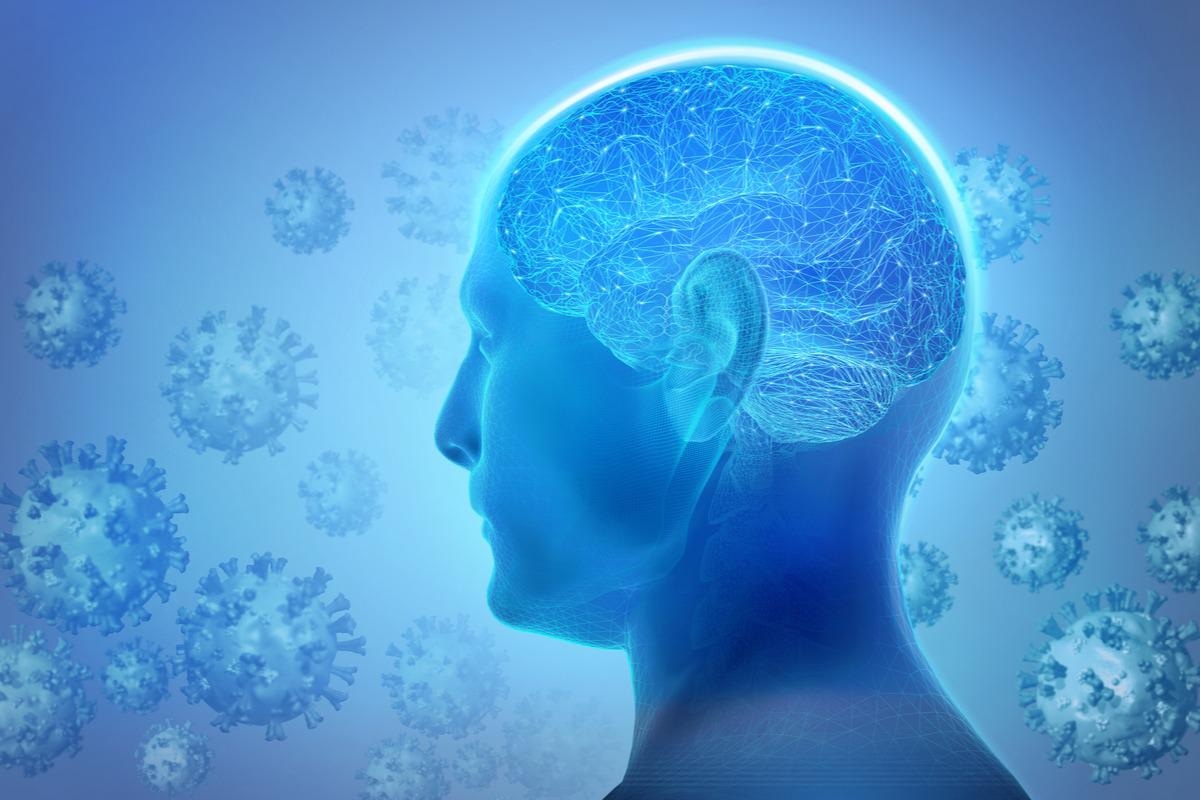In a recent study posted to the Research Square* preprint server under consideration at a Nature Portfolio journal, researchers demonstrated that a modified vaccinia virus Ankara (MVA) vector expressing the severe acute respiratory syndrome coronavirus 2 (SARS-CoV-2) spike (S) protein (MVA-CoV2-S) was 100% effective in preventing neuroinvasion and brain damage by SARS-CoV-2 in transgenic mice.
 Study: MVA-CoV2-S vaccine candidate confers full protection from SARS-CoV-2 brain infection and damage in susceptible transgenic mice. Image Credit: Dana.S/Shutterstock
Study: MVA-CoV2-S vaccine candidate confers full protection from SARS-CoV-2 brain infection and damage in susceptible transgenic mice. Image Credit: Dana.S/Shutterstock
Although coronavirus disease 2019 (COVID-19) is primarily a respiratory disease, many patients show neurological symptoms attributable to secondary effects of the systemic alterations or the direct infection of the central nervous system (CNS) by SARS-CoV-2. Previous studies have reported the presence of SARS-CoV-2 in the brain of experimental animals, including transgenic and knock-in mice.
All the currently used COVID-19 vaccines, including Moderna and AstraZeneca, do not confer sterilizing immunity. It is, however, unknown whether they prevent the spread of SARS-CoV-2 to the CNS and confer protection against associated brain damage.
About the study
In the present study, researchers analyzed the spatiotemporal SARS-CoV-2 viral distribution and replication in the brain in the K18-human angiotensin-converting enzyme 2 (hACE2) mouse model. They adopted two experimental approaches to test the efficacy of the MVA-CoV2-S vaccine.
In the first approach, they immunized K18-hACE2 mice intramuscularly (i.m.) with one or two doses of MVA-CoV2-S at days 0 and 28. On day 63, they inoculated a lethal intranasal (i.n.) SARS-CoV-2 MAD6 isolates in these mice, and after four days post-inoculation (dpi), three mice from each group were sacrificed for brain extraction and processing. As a control, they used SARS-CoV-2-challenged mice primed and boosted with MVA-WT (wild-type empty MVA vector).
In the second experimental approach, the researchers evaluated whether mice that survived after the SARS-CoV-2 challenge, having received one or two doses of the MVA-CoV2-S vaccine, were protected against viral neuroinvasion following SARS-CoV-2 reinfection performed 46 days after the first SARS-CoV-2 challenge. Five mice from each group were sacrificed for brain extraction and processing at six dpi or six days after the first infection in the unvaccinated and MVA-WT groups. SARS-CoV-2-challenged unvaccinated, MVA-WT inoculated mice comprised the control group.
Then, the researchers performed immunohistochemistry on mice brains after two, four, and six dpi. All the mice infected with SARS-CoV-2 lost more than 25% of their body weight after six dpi and were sacrificed.
Since SARS-CoV-2 infection can induce neuronal apoptosis, the researchers used the immunodetection technique to study the number of cells expressing cleaved caspase-3 (c-casp3) in brains from the control group and SARS-CoV-2-infected mice after four and six dpi. The authors also performed quantitative analyses of apoptotic cell numbers in the hippocampus and the hypothalamus.
Study findings
Brain coronal sections of SARS-CoV-2-infected mice showed SARS-CoV-2 nucleocapsid (N) staining, with numerous infected cells throughout different regions of the brain. Although after two dpi, there was no evidence of SARS-CoV-2 infection in three mice, after four dpi, variable levels of viral infection were observed in different cerebral regions, especially the basal forebrain, amygdala, and hypothalamus, showed the highest levels of viral infection.
Only one of three mice brains showed few SARS-CoV-2 cells, indicating a lower level of infection after four dpi. Finally, after six dpi, all five mice brains analyzed revealed high levels of SARS-CoV-2 N staining but showed a non-homogeneous distribution of viral infection among the main areas of the brain. Histological analysis showed that viral replication in the brain occurred primarily in neurons, further validated by high-resolution confocal microscopy analysis.
The cerebral SARS-CoV-2 replication began two to four days after inoculation with MAD6 isolate, attaining the highest rates in ventral areas of the brain. Later, between four to six dpi, viral replication spread to most cerebral regions, producing a severe SARS-CoV-2 infection.
SARS-CoV-2-infected mice brains had a significant number of C-Casp3+ cells distributed all across the brain, highest in the hypothalamus region, particularly evident at six dpi when the brain viral infection is maximal. The distribution of C-Casp3+ cells suggested that most apoptotic cells were neurons.
All the vaccinated mice, regardless of MVA-CoV2-S vaccine dosage, were 100% protected against cerebral SARS-CoV-2 infection following a single infection or reinfection, with no trace of any SARS-CoV-2-infected cells in any of the brain regions analyzed.
Conclusions
According to the study's authors, two previous studies have addressed the efficacy of adenoviral or lentiviral S-based vaccine candidates against SARS-CoV-2 cerebral infection using K18-hACE2 transgenic mice. The current study is the first to demonstrate that the MVA-CoV2-S vaccine candidate completely abolished SARS-CoV-2 brain replication, even with a single dose, and showed 100% efficacy against SARS-CoV-2 brain infection and damage even after reinfection. MVA-CoV2-S also induced SARS-CoV-2-specific memory cells and CD4+ and CD8+ T cell immune responses six months after the vaccination.
Together, these results support the evaluation of MVA-CoV2-S, a promising COVID-19 vaccine candidate, in clinical trials.
*Important notice
Research Square publish preliminary scientific reports that are not peer-reviewed and, therefore, should not be regarded as conclusive, guide clinical practice/health-related behavior, or treated as established information.
-
Villadiego, J. et al. (2022) "MVA-CoV2-S vaccine candidate confers full protection from SARS-CoV-2 brain infection and damage in susceptible transgenic mice". Research Square. doi: 10.21203/rs.3.rs-1324885/v1. https://www.researchsquare.com/article/rs-1324885/v1
Posted in: Medical Science News | Medical Research News | Disease/Infection News
Tags: Amygdala, Angiotensin, Angiotensin-Converting Enzyme 2, Apoptosis, Brain, CD4, Cell, Central Nervous System, Confocal microscopy, Coronavirus, Coronavirus Disease COVID-19, covid-19, Efficacy, Enzyme, Hippocampus, Hypothalamus, immunity, Immunohistochemistry, Microscopy, Mouse Model, Nervous System, Neurons, Protein, Research, Respiratory, Respiratory Disease, SARS, SARS-CoV-2, Severe Acute Respiratory, Severe Acute Respiratory Syndrome, Syndrome, Transgenic, Vaccine, Vaccinia Virus, Virus

Written by
Neha Mathur
Neha Mathur has a Master’s degree in Biotechnology and extensive experience in digital marketing. She is passionate about reading and music. When she is not working, Neha likes to cook and travel.
Source: Read Full Article